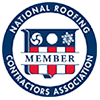
Your roof is the only thing that stands between your home and family and the hot sun, heavy rain and strong winds of Florida. If it’s not performing at 100%, it leaves your home and family vulnerable to damage from the elements. Luckily, Destin Roofing is the #1 roof repair company in Destin and the surrounding areas!
When your roof needs repairs, count on the fast and friendly professional roof repair services from Destin Roofing. Call us today to schedule service.
Signs You Need Roof Repair
It’s easy to consider our roofs to be a permanent part of our home — one that doesn’t need to be repaired or replaced. That’s why it’s easy to look past signs that your roof is in need of repair, which means the unnoticed issues can cause more damage. Here are some signs your roof needs repairs:
- Missing or curled shingles
- Dirty, dark or wet shingles
- Shingle asphalt in the gutters
- Visible damage around roof openings
- Peeling or blistering exterior paint near the roof
- Staining on interior walls
- Sagging roof deck
- Attic leaks after rain
- Visible outside light from inside the attic
Destin Roofing Repair Services
Do you have a roof leak that needs repairing? Maybe your roof was damaged in a recent storm by hail, wind or flying debris. It’s also possible that simple wear and tear from age has caused problems with your roof. Regardless of the reason your roof is damaged, Destin Roofing has you covered!
Our team of professional roofers is highly trained and experienced to work on roofs in Destin and the surrounding areas. From small shingle patches to larger-scale repair jobs, there’s no roofing problem too big for our specialists to handle. Don’t let a damaged roof compromise the integrity of your home — call on the Destin Roofing team when you need roof repairs.
Commercial Roof Repair In Destin
No matter what industry you’re in, it’s safe to say you’ll need a roof overhead. And not just any roof will do! Your commercial space needs a roof that will keep you, your employees and your customers safe through everything Florida weather will throw at it over the years. Call Destin Roofing for all of your commercial roof repair needs, and our team will ensure that your roof is returned to top shape as soon as possible.
When it’s time for a new roof, we also offer commercial roof replacement services!
We’re proud to be your roofing contractors and will deliver the best results for your building!
Call On Destin Roofing For Roof Repairs
Destin Roofing has been offering roofing services in the Destin area for 40 years. Whether it’s a common roof repair or something out of the ordinary, it’s no problem for the roofers at Destin Roofing. Not only do we guarantee the quality of our expert work, but we also back it up with warranties. Our team of roofers is full of experienced, skilled professionals that you can trust with your roof, from repairs to replacement.
See why so many Destin area homeowners choose Destin Roofing as their trusted roof repair company. When you need roof repairs, contact us online or by phone today to schedule an appointment.



